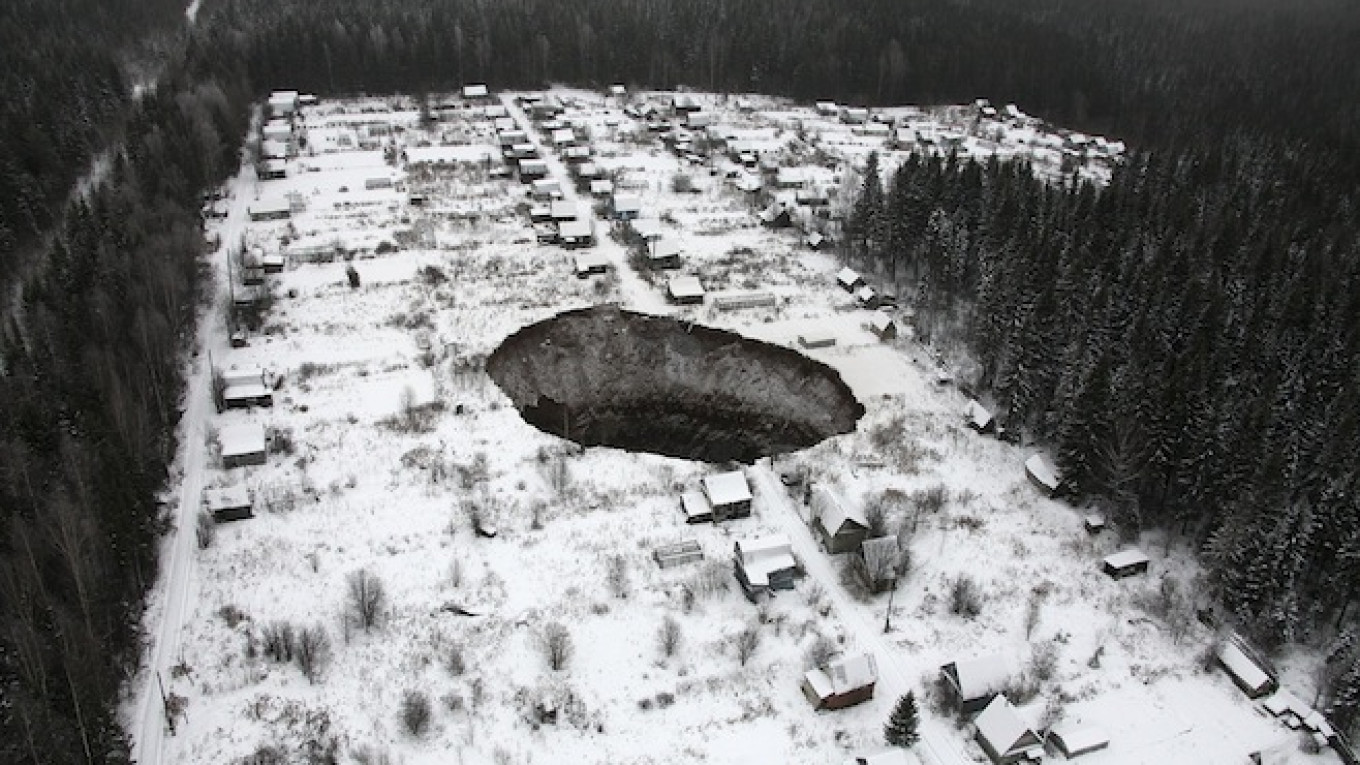Photos of a sinkhole that appeared in the Perm region after a mining accident this week have been published online, as local emergency services strive to contain the expansion of a giant crater that is threatening global supplies of the crop nutrient potash.
The sinkhole, which initially measured 20 by 30 meters, appeared after high levels of brine inflow forced the closure of the Solikamsk-2 mine on Tuesday. The mine is operated by Uralkali, the world's largest potash company, whose shares dipped on news of the closure.
Shares in Uralkali have fallen 28 percent since Tuesday amid fears the mining accident could reduce global potash supplies and inflate prices of the nutrient worldwide.
While some fear the mining accident could deal yet another blow to Russia's economy — already under duress due to Western sanctions over the crisis in Ukraine and a struggling ruble — Uralkali's CEO downplayed the fears.
"The accident is not catastrophic for the company's operations or people living in the area," Chief Executive Dmitry Osipov said, Reuters reported Tuesday.
Since its discovery, the sinkhole has stretched from about 30 meters to 40 meters, local news site V Kurse reported Friday, posting images of the hole taken by an emergency services' drone.
The hole is located on the site of an abandoned mine, 3,5 kilometers away from the nearest settlement, the regional emergency services said Wednesday in an online statement.
The site also once housed a cooperative of summer residences, or dachas, which was abandoned in 2005 following concerns that the ground was sinking, V Kurse reported. According to local residents, one of the dachas was swallowed up by the hole, the report said.
Aerial photos of the giant sinkhole taken by the emergency services show the crater surrounded by properties.
The images recall photographs of a giant crater that appeared in the Yamal-Nenets autonomous district in mid-July, before a second hole was discovered several days later.
Scientists later tied the appearance of the hole to a discharge of gas hydrates deep beneath the surface of the Yamal Peninsula, resulting in an underground explosion that formed the crater.
Emergency Ministry researchers are carrying out tests around the sinkhole in Solikamsk to determine whether any gas is being released at the site. Seismic sensors have also been placed near the crater, V Kurse reported.
About 1,300 miners working at the Solikamsk-2 mine have been sent home on two-thirds of their pay until January following the mine's closure, the report said.
It remains to be seen whether the situation at Solikamsk will be as serious as that experienced at Uralkali's Berezniki-1 site, also located in the Perm region, which was closed in 2006 after becoming completely flooded following a brine inflow.
The Solikamsk-2 mine accounts for a fifth of Uralkali's output and 3.5 percent of global capacity.
This article has been corrected to state that about 1,300 miners have been sent home. An earlier version incorrectly put that figure at 3,500.
A Message from The Moscow Times:
Dear readers,
We are facing unprecedented challenges. Russia's Prosecutor General's Office has designated The Moscow Times as an "undesirable" organization, criminalizing our work and putting our staff at risk of prosecution. This follows our earlier unjust labeling as a "foreign agent."
These actions are direct attempts to silence independent journalism in Russia. The authorities claim our work "discredits the decisions of the Russian leadership." We see things differently: we strive to provide accurate, unbiased reporting on Russia.
We, the journalists of The Moscow Times, refuse to be silenced. But to continue our work, we need your help.
Your support, no matter how small, makes a world of difference. If you can, please support us monthly starting from just $2. It's quick to set up, and every contribution makes a significant impact.
By supporting The Moscow Times, you're defending open, independent journalism in the face of repression. Thank you for standing with us.
Remind me later.


